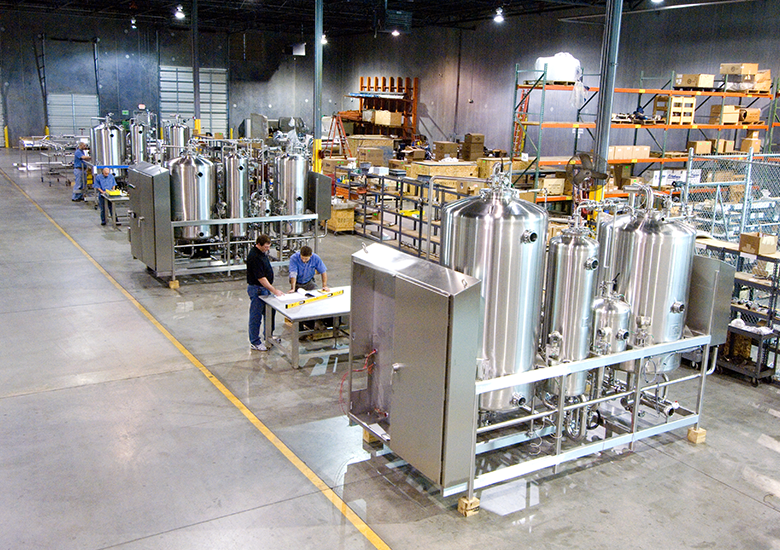DEAERATION & CIP SYSTEMS
Bevcorp’s MircoBlend division offers different deaeration & CIP systems including:
Vacuum Deaeration
The Bevcorp vacuum deaerator is the most common form of deaeration used in meter-based blenders to achieve the lowest dissolved O2 value possible. The deaerator is a “vacuum/recirculation” type oxygen removal system with CO2 injection.
Advantages:
- Can supply from .75 to 1.2 ppm O2 content, depending upon water temperature
- Contains an atomizing diffuser in the water inlet to the deaerator allowing the water to give up most of the entrained gasses
- The elimination of entrained gasses from the water facilitates CO2 absorption in the mixed product
- Smaller footprint
- Less installation cost
- Deaerator and discharge piping are cleaned during CIP
- Historical data trending and reporting
Membrane Deaeration
Membrane technology is a highly efficient way to remove oxygen from water when temperatures are below 45° F and its performance exceeds conventional vacuum deaeration.
Membrane contactors are capable of either removing or adding gasses to fluids. Membrane contactors contain thousands of microporous polypropylene fibers, knitted into an array and wound around a distribution tube. These are hydrophobic so that gasses flow freely while water will not pass through.
Advantages:
- Oxygen removal is targeted at .75 ppm or less at maximum flow rates
- Targeted oxygen removal is available at 34° F
- Membrane modules are located within the existing blender frame without additional spacing required (results in a smaller footprint)
- Typically reduced installation cost, with no additional electrical or process piping required
CIP/Deaerator Integration:
The Vacuum Deaerator has the capability of optional CIP functionality built into the same skid package. The existing vacuum tank becomes the CIP reservoir. The result on a conventional CIP system is a lower overall hardware cost limited to the heat exchanger with controls, the return and outlet temperature and chemical strength instrumentation. The operator interface is PC-driven with historical data collection and reporting.
- CIP functions are built into the vacuum deaerator skid by permitting the existing vacuum tank to become the CIP reservoir.
- Utilizes existing footprint, electrical and process piping connections and distribution pumps
- PC-driven operator interface with historical data collection and reporting
- Deaerator and discharge piping are cleaned during CIP
- Smaller footprint
- Lower installation cost
Audits
Bevcorp process engineers can audit your systems to identify equipment capabilities and deficiencies in blending units, service utilities, and refrigeration systems.




